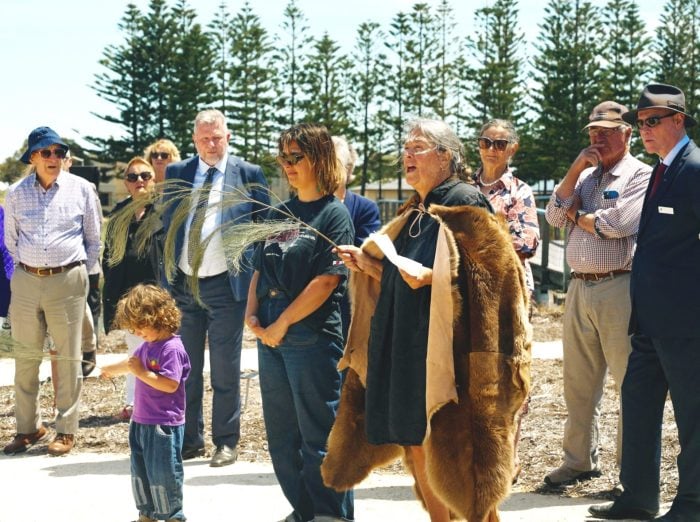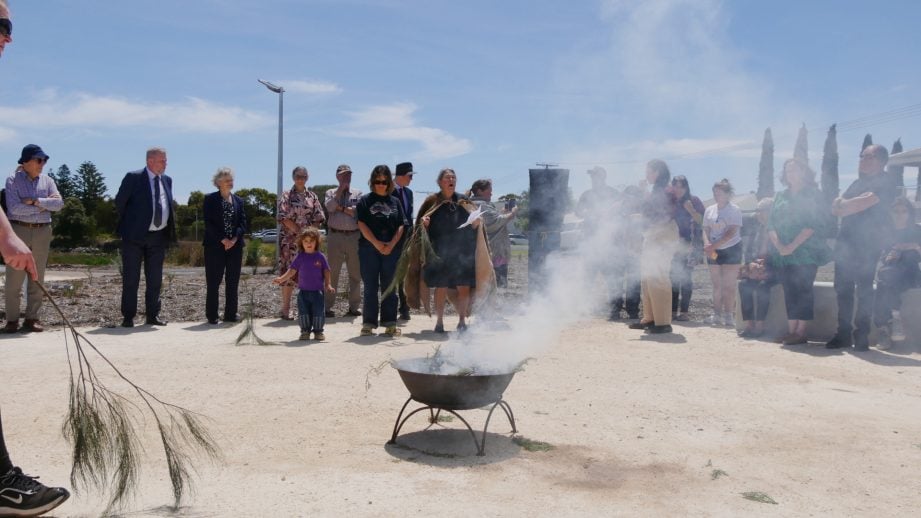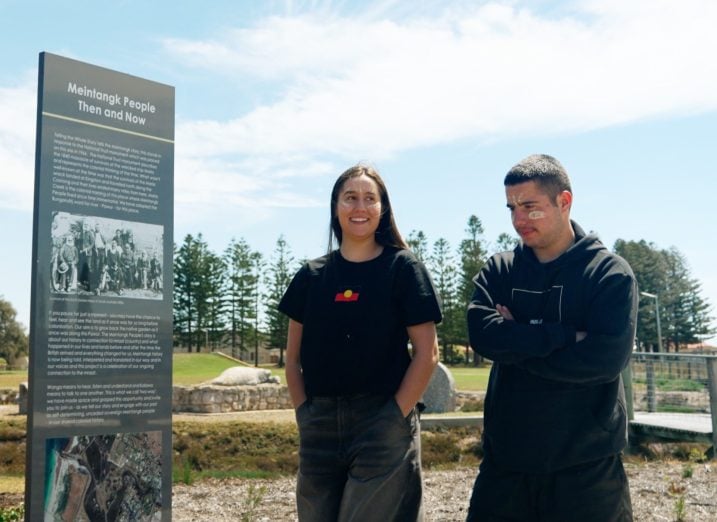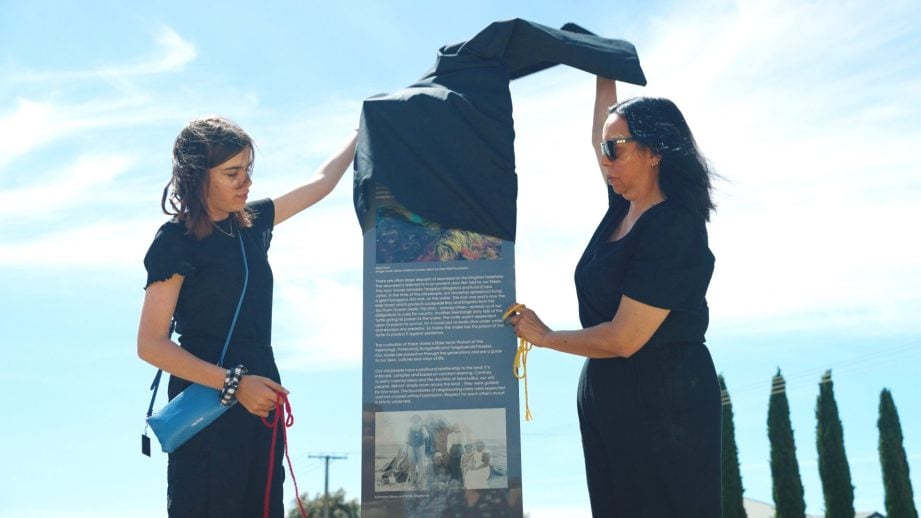An innovative project at Kingston recognising the importance of truth-telling is finding creative ways to bring First Nations’ perspectives to colonial stories and acknowledge a shared history. A collaborative endeavour between three First Nations women and the Kingston SE Branch of the National Trust, Telling the Whole Story has involved establishing a native garden alongside a monument erected by the National Trust almost 60 years ago to commemorate the wreck of the Maria on Margaret Brock Reef and the subsequent ‘massacre’ of 26 survivors as they walked towards Adelaide. The garden features a communal gathering space and interpretative signs explaining First Nations stories of this place, as shared by descendants of the Meintangk people. In this special feature written for Heritage Living, Tanganekald, Meintangk and Bunganditj woman Professor Irene Watson and her daughters, Tamara Pomery and Kirrakee Watson, explain the two-way approach taken and why it matters.
The Telling the Whole Story Project began more than two years ago as a partnership between South East First Nations members Irene Watson, Tamara Pomery and Kirrakee Watson, and the National Trust of South Australia. It began as a response to the National Trust plaque, unveiled in 1966, which describes the massacre of survivors from the shipwrecked Maria in 1840. Deemed offensive to Meintangk, Bunganditj and Potaruwutj peoples, the plaque represents colonial thinking of the time, and excludes First Nations’ voices and perspectives of the truth. The project has allowed us to become the authors of our own ancient and contemporary histories and respond to the racist 1960s portrayal of First Nations Peoples. Instead of demanding the monument be removed, it takes a two-way approach to learning, speaking back to accounts that are disrespectful to our ancestors by creating a counterpoint. New interpretative signs record the history of our Aboriginal ancestors in our own words, and plantings recover native vegetation and Bunganditj names as a way of acknowledging our past.
As authors and designers leading the project, one of our aims was to share knowledge of the pre-colonial Meintangk, Bunganditj and Potaruwutj peoples, our lands and culture. The project is innovative for its respectful and informative two-way approach to retelling our shared colonial history, while centring and honouring the ongoing presence of First Nations Peoples and our continuing connection to country. The environment and its recovery and conservation is critical, so we made native re-vegetation the focus, using signage and a website to tell that story of connection, and inviting people to learn more about First Nations values in caring for country. The garden also features a communal gathering place, Wanga Kalawa, which means to ‘listen and talk’.
Pawur is a Bunganditj word describing Maria Creek, which flows through the site. Part of our vision is to recover the original native vegetation of the Pawur-Maria Creek. This began in July 2024 when local volunteers and Kingston Community School students planted native species on the site. Signs identify the various plants, using Bunganditj language names. Through this recovery of our language and our plant knowledge, we are honouring the deep connection we have to this country.
Tamara Pomery played an essential part in Telling the Whole Story, leveraging her project management skills, and her cultural knowledge, language skills and research experience to oversee everything from sourcing the contractor to the installation phase. She is also completing a best-practice guide for caring for country initiatives. This work in progress will be included on the project website. Ecological advisors Nature Glenelg Trust assisted Tamara with the mapping and recovery of the original native flora and fauna of the site.
Kirrakee Watson brought to the project design and architectural skills and prepared the conceptual design, which was presented to the Kingston District Council for their approval and support. At the time of writing, Kirrakee and Tamara are also progressing an art installation supported by a council grant; this is due for completion in 2025.
Allison Stillwell from the Kingston SE Branch provided support for the duration of the project, managing engagement with sponsors and local community groups. Then State President Paul Ledbetter provided leadership within the National Trust, which enabled us to work in a supportive environment. This collaborative approach to engagement centred on respect for traditional owner ways of working.
From the outset we invested time in developing Terms of Reference (TOR) to guide and inform the work. The purpose was to productively and positively enable the cultural authority and voices of Meintangk, Bunganditj, Potaruwutj Peoples to tell our story. During the project we sought to decolonise the dominant voices, recentre the telling of our Aboriginal history and develop respectful, reciprocal and collaborative relationships, where our free, prior and informed consent is sought whenever we are working together. It is important in collaborative work to develop respectful two-way approaches to telling, listening and representing history so the truth can be represented through the ethical inclusion of Aboriginal knowledge.
Our project is accessible to both locals and travellers. The Limestone Coast region is a popular tourist destination, and the project site sits alongside the information bay and gateway to Kingston. It is where travellers frequently stop there to take a break. Telling the Whole Story is a response to questions from both locals and visitors, who frequently request information about the Aboriginal history of the area. There are also valuable learning and participatory opportunities relating to the natural world for local school students involved in planting the native vegetation and watching as it grows. We look forward to working further with the council and local community groups for future maintenance, planting and recovery of the Pawur Maria Creek. We acknowledge our partnership with the National Trust and thank them and the sponsors who have supported this project, including the Limestone Coast Landscape Board, the Foundation for Rural and Regional Renewal, the History Trust of SA and the Kingston District Council.
This project aimed to expand and value our knowledge of history by including and making visible Aboriginal ways of knowing our past and present. As our Meintangk Elders have said before: “We have always been here, and we want to show people who come to our lands that we are still here. We are still alive as the Meintangk People, and we have hopes, we have dreams and we have goals for our future.”
Learn more
For more information about the project, the Meintangk and the rich First Nations history and understanding of Puwar – Maria Creek please visit tellingthewholestory.org








